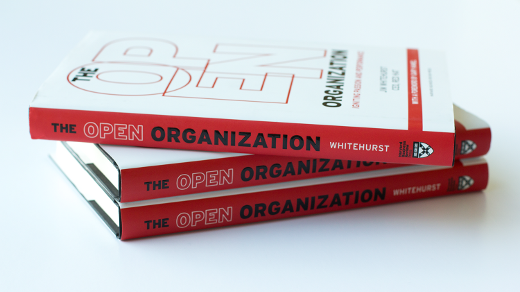The Open Organization book club is in full swing. During preparations a few weeks ago, I was asked (as an ambassador) to pick two of my favorite chapters from the book. During the weeks to come, I would lead discussion on one of them. Choosing wasn't difficult, as topics like meritocracy and passion resonate with my many years of involvement in open source. Passion it was!
Passion and purpose are changing the way we work. Are you, as a manager, allowing emotion in the workplace? How do you lead and control passionate teams? How do you recognize and reinforce passion? (Here's a hint: With a simple "thank you," and by hiring the right people.) We'll cover these topics—and more—this week.
Discussion (Chapter 2: Igniting passion)
In the book club this week, we'll be discussing "Chapter 2: Igniting Passion."
"What sets open organizations apart, and what gives them a true competitive advantage, is that they also have embraced the idea that they need to activate the emotional passions and desires among their workers to actually reach that ultimate destination as defined by their purpose. Today's workers want their work to mean something; they want to be part of something that makes a difference. If having a purpose gets people to do the right things, then passion motivates them to extraordinary performance—to go that extra mile—as they try to fulfill their goal." (p. 31)
Passion.
I could write about so much. I have a passion for the open source way, and a 10-year journey of involvement in open source projects has taught me this. In recent years, passion made me look beyond open source software and projects. I started thinking about organizations—and leadership. I wondered how the open source way would add value to organizations, and how today's leaders could incorporate it into their management practices.
My involvement in open source has shown me that a group of people with a common goal and passion can achieve something greater than they could imagine by themselves. It's this purpose (and passion) Jim Whitehurst writes about in chapter 2 of The Open Organization. The recipe for an open organization begins with purpose and passion.
A few hurdles stand in the way of getting there. The first one: allowing those "scary" emotions in the workspace. Why? Without emotions, there is no passion, no motivation, no inspiration. Leaders will have to think and lead differently. They have to get personal, say "thank you," and tap into their associates' passions. These same leaders will have to learn how to recognize and reinforce those passions—and, at times, control them in order to keep a "passionate organization constructively focused."
Red Hat has been fortunate. It has a head start in becoming an open organization (because of its roots in open source). Thinking about this concept of open organization and reflecting on companies that lead through conventional management theories raises a few questions for me:
-
How could such companies turn old habits around and start applying this model to their organizations?
-
It all clearly starts with people, purpose, and passion. How does one ignite this passion? By hiring passionate people?
-
What emotions are frowned upon in your work place? Which ones would you like to see become part of your culture?
-
What ignites your passion? Can you name an example, a situation you’ve been in, where passion and motivation got you to go that extra mile?
A message from Jim
Resources
Follow the conversation on Twitter #theopenorg





4 Comments